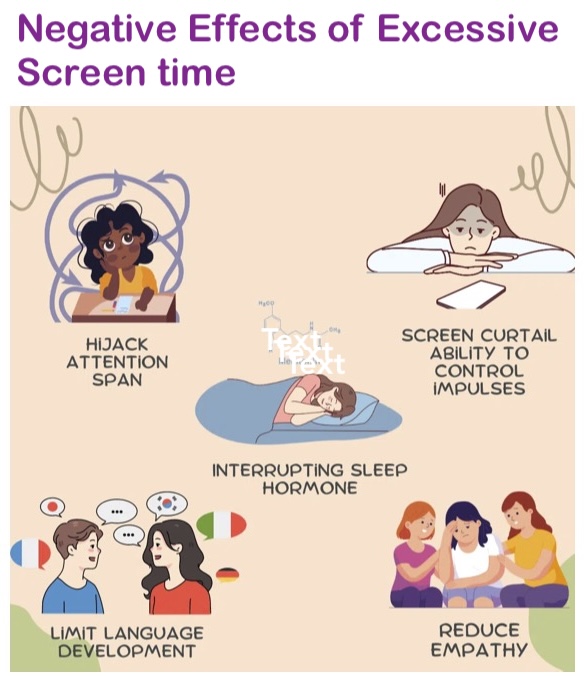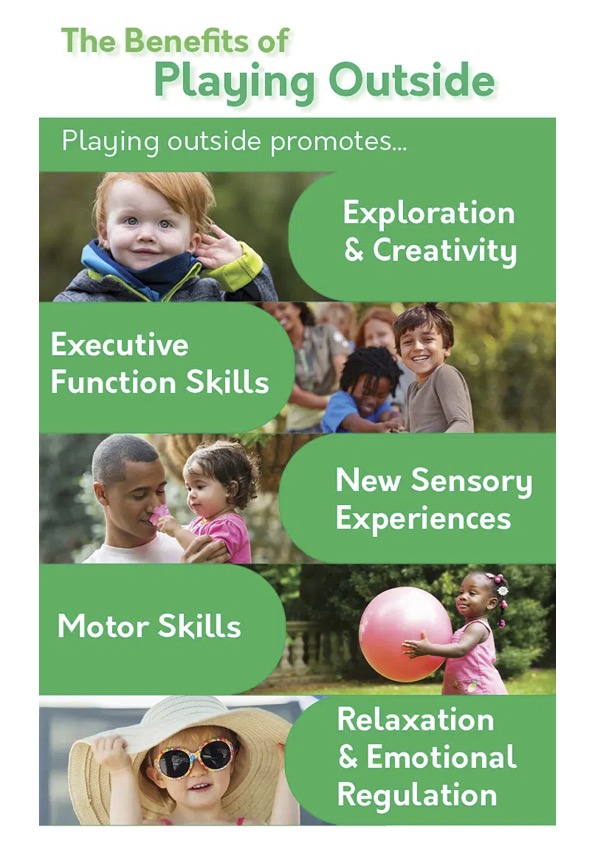“Just 5 more minutes, please!” – a phrase every parent hears when it’s time to turn off the screen. In today’s technological world, Tv’s, tablets and smartphones are now an inseparable part of our everyday family life. Screens are convenient, they keep children entertained and sometimes even they teach new skills.
But here’s the catch: When Screen time replaces real play, it impacts development in ways we cannot ignore.
As Occupational Therapists, we often see children who struggle with Posture, Handwriting, Attention or Social skills; it is notable observation that these kids are involved more in digital play and have less opportunities for Hands-on play. Here, we will discuss why Real Play matters, what too much screen time does and tips on how parents can achieve a healthy balance between both.
Screen Time Vs Real Play – What’s the Difference?
Screen Time
- Includes TV shows, YouTube Videos, Video games, Educational Apps and Social Media.
- Usually Passive (watching) or semi-active (swiping, tapping)
- It usually provides Visual and Auditory Stimulation, but very little movement.
Real Play
- Involves Active engagement with people, objects and environment.
- Includes games like building blocks, running outside, drawing, pretend cooking, hide-and-seek, climbing playground equipment etc.
- Provides whole-body learning: Movement, touch, balance, problem-solving, imagination and social connections.
A Key factor to remember is; Children learn by Doing; not just by Watching.
How Much Screen Time is Too MUCH?
The American Academy of Pediatrics (AAP) recommends:
- Under 18 months: Avoid Screen time (except for short video calls with family)
- 18 – 24 Months: Very limited, high-quality programming, co-viewed with a parent.
- 2-5 years: Maximum 1 hour/day of quality content, with parental involvement.
6+ years: Consistent limits; ensure screens don’t replace sleep, physical activity or family interaction.
However, in reality it is noted that, many toddlers get 2-4 hours/day of Screen time; which is far more than recommended standards.

Risks of Excessive Screen Time:
Occupational Therapists often observe detrimental effects of excessive screen time, as listed below:
Physical Effects:
- Weak core and posture (slouching, difficulty in sitting upright).
- Poor Fine Motor Skills (Weaker hand muscles, Delayed handwriting skills).
- Reduced Co-ordination due to less active movement.
Cognition:
- Shorter attention span (used to fast-paced screen changes).
- Difficulty with self-regulation (meltdowns when screens are removed).
Social And Emotional:
- Less practice with Sharing, Turn-taking and Problem- solving.
- Preference for screens over social play.
Sensory Processing & Communication:
- Overstimulation (bright lights, sounds and rapid scene changes).
- Understimulation of Vestibular (movement) and Proprioceptive (body awareness) systems.
- Affected language development – Gibberish talk or develop an accent.

Benefits of Real Play
Real Play supports Development across multiple domains:
Motor Skills:
- Running, climbing, crawling – Builds core strength and coordination.
- Drawing, building blocks – strengthens fine motor and pre-writing skills.
Cognition & Problem Solving:
- Figuring out how to build a tower or solve a puzzle – encourages Planning and flexibility.
Imagination & Creativity:
- Pretend play (cooking, superheroes, dress- up) – builds abstract thinking.
Social Development:
- Playing with siblings/friends – Teaches Sharing, Empathy, Teamwork.
Sensory Integration:
- Real play provides Touch, Movement, Balance and Deep Pressure that regulate the Child’s nervous system.
Practical Occupational Therapy Tips For Parents:
Here are some real-life strategies to reduce screen dependency and encourage play:
Set Clear Screen Time Rules
- Example: 30 minutes after lunch, 30 minutes after dinner.
- Implement a visual timer to help children understand when screen time concludes.
Replace Screens with Play Routines
- Example – Morning: Animal walks (Bear crawl to bathroom.
- Afternoon: Obstacle course (pillows, chairs, tunnels).
- Evening: Drawing, puzzles or story play before bedtime.
Offer Sensory Rich Alternatives
Instead of YouTube:
- For Movement – Jump on cushions, trampoline, dance.
- For quiet Focus – Play-Doh, puzzles, colouring.
- For Imagination – Dress-up, Puppet play, Pretend kitchen etc.
Co-Play instead of Co-View
- Watch TV together and talk about what’s happening.
- Turn shows into play: After cooking shows, pretend to “cook” with toy food.
Be a Role Model
- Children imitate adults. If they see you glued to your phone, they’ll do the same.
- Show them play is valuable by joining in.
The Occupational Therapy Perspective
Occupational therapists predominantly work to establish independence in daily occupations across human life-span. Play is a crucial aspect of a child’s overall development, as it is their primary occupation. Through play, children develop gross and fine motor skills, enhance cognition and problem-solving abilities, build connections, form meaningful relationships, and learn collaboration.
As Occupational therapists, we often reintroduce foundational play for children who missed out on it. For example:
- A child struggling with writing might first need Play-Doh squeezing and Lego play to strengthen hand muscles.
- A child with poor posture may need Tummy time, Crawling and climbing before sitting at a desk.
- A child with meltdowns during transitions may require sensory play (jumping, swinging, deep pressure) to regulate.
Screens are here to stay, and they can be a helpful tool – but they should never replace the rich, hands-on-learning of real play. By setting limits, creating routines and encouraging active play, parents can indeed give their children the best of both worlds.
Here are some quick screen time alternatives you can try at home
- If a child want to watch cartoons – offer a dance party with music.
- If a child wants to play video games – offer a sensory stimulating game like lego, puzzle or play-doh.
- If a child is scrolling videos or reels – offer them to pretend play with dolls, cars, magna-tiles, etc.
- If a child is watching YouTube videos – offer them to join you in some activity – as simple as cooking, cleaning, etc.
- If a child wants to watch more TV – offer them t0 do physical activity like going to garden or down to play.
Remember: A child will never say, “I wish I had played more video games and watched cartoons,” but they will certainly remember the games, building forts, adventures they had with you.

